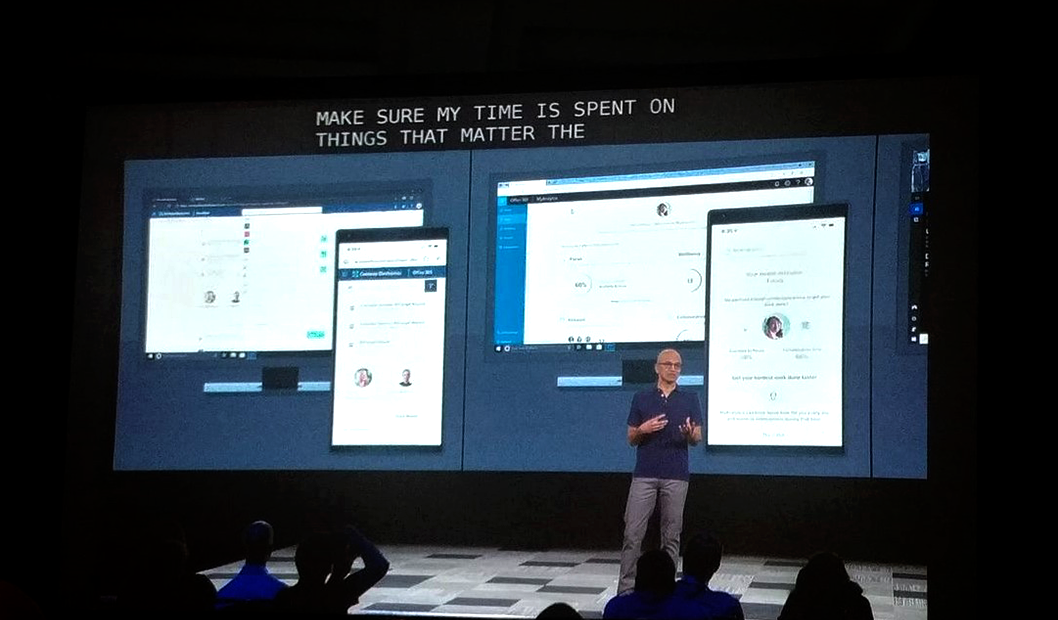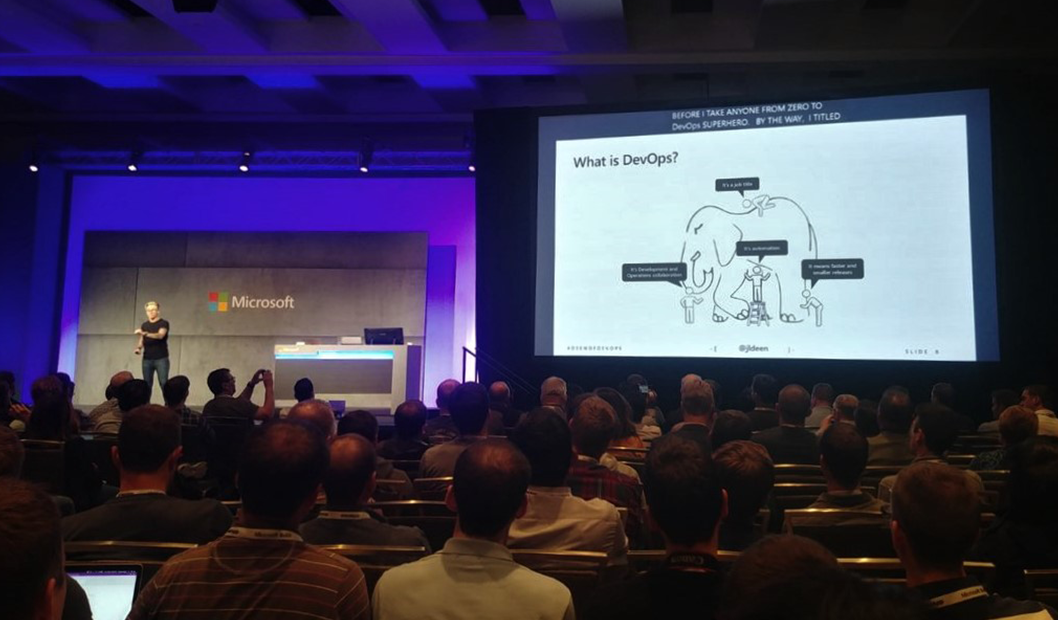Microsoft Build 2019 Recap
Build what…?
To be a part of a technology conference as big as
Microsoft Build for the
4th time is a pleasure and a privilege at the same time. Established way back in 2011, Microsoft Build is the largest event designed especially for developers, where new breakthroughs in technology concerning Microsoft stack are uncovered.
Tech sessions about various development tracks give IT crews opportunity to get in touch with members of development teams for different Microsoft technology stacks (like
.NET,
SQL Server,
DevOps,
PowerBI,
Azure…) and also with multiple Microsoft partners which provide products in collaboration with Microsoft technologies (like
Progress,
DevExpress,
Docker,
Redhat,
Twilio…). Not to mention, this year the event gathered more than 15 000 attendees from all over the world.
Like last year, the event was held in
Seattle following Microsoft’s idea to be close to its headquarters. More than 300+ sessions in the three days of conference makes you want to have a possibility to multiply yourself so you can attend it all. Nevertheless, let’s go through some of the key talking points!
Microsoft goes Cloud First
It’s well known that since Satya Nadella has been appointed CEO, Microsoft has changed its strategy into “cloud first”. This was confirmed during the opening keynote and all the following sessions in the announcements and lectures. In the foreground of the event was
Microsoft Azure and, as Satya mentioned repeatedly in his opening speech: “Microsoft mission is to build the largest world’s computer”, pretty much all sessions in the next few days were somewhere on that track.
Simply put, Azure is the
largest cloud operator in the world with 54 datacenters all over the world and more to be built. With now more matured
Azure IoT Edge technology, Microsoft provides a bridge to plug in more various devices (drones, coffee machines, cars… you name it) to cloud, where possibilities for their usage are numerous and they increase every day. All well-known on-premises technologies have for years been first developed for cloud (
Office,
SQL Server,
DevOps Server - ex TFS…), the field in which numerous news have been introduced.
Alongside Azure, the co-star of the show was definitely Artificial Intelligence and Microsoft’s technology offer regarding that stack. Having that in mind, let’s dig deeper into announcements and see what trends have been set for this year.
.png.aspx)
Picture 1: Satya Nadella, Microsoft CEO
Technology announcements
In the sea of new announcements, let’s mention a few of them that caught our attention.
Serverless
Serverless was one of the key words in this conference. Multiple Azure services have gone into serverless mode, e.g.
Azure Kubernetes Service,
Azure Hyperscale Databases (SQL, MySQL and PostgreSQL managed services) and
Azure Data Factory. This option enables end users to elastically scale fully managed service and pay per performance.
Infrastructure
To enable all those serverless features in Azure, back in the day Microsoft developed
Service Fabric technology as a virtual layer on top of infrastructure for building microservices. All previously mentioned serverless services are built on Service Fabric. A new generation of this technology, called
Service Fabric Mesh, was announced last year, and it has been in preview since then. This year we’ve been given insights into development process of that technology and an accompanying roadmap.
You can imagine that for the purpose of managing resources in data centers there must be some way to do it easily. For years,
Azure Resource Manager has been carrying out that role. Now a new generation of this feature has been announced -
Azure Deployment Manager.
.png.aspx)
Picture 2: What is DevOps, a Microsoft workshop
Data management
As mentioned above,
Azure SQL Service has gone into serverless mode, but one big announcement was made for this technology in another field -
Azure SQL Server Edge, which equips devices with an SQL server with AI capabilities. New features for
Azure Cosmos DB have been shipped in the area of machine learning, as well as performance improvements on
Azure SQL Data Warehouse services and new features on
Azure Data Factory, which now provide you with the possibility to perform
ETL and ELT processes without typing a single line of code.
Machine Learning
As Microsoft continues its investment in supporting machine learning development as a part of their stack, many new features have been introduced.
Azure Cognitive Services are richer with new features such as Form recognizer, Ink recognizer, Decision maker and Conversation transcription maker.
DevOps processes are not something new these days, but tooling for bringing data scientists into the process is. DevOps Services are now richer with
MLOps tooling, which enables data scientists to build, deploy, test and re-evaluate their data models as a part of DevOps process.
Last but not least, the most exciting news for me personally is the fact that
ML.NET is not in preview anymore, but its Version 1 has come out. What does that mean? Its capabilities, such as model builder, make C# developers fully armored to resolve problems that until now only mathematicians with knowledge of Phyton or R could have dealt with. Not to mention that this has been built upon .NET Core which makes the technology miles ahead in performance when compared to Python. Full stack developers have a new toy now. 😊
Power Platform
Power Platform is Microsoft’s name for a group of three technologies:
PowerApps,
PowerBI,
Microsoft Flow. The key idea here is to give ability to non-developer audience to easily build applications, business workflows and data visualizations without writing a single line of code. Background technology which connects all those is
Common Data Service, a serverless data back end. There is nothing particularly new here, but it’s worth mentioning since Microsoft is pushing this technology stack really hard and tries to gain more customers in rapid development area, so a lot of sessions dealt with that aspect.
.NET
Among several announcements in this area, the release of the .
NET Core 3 with
C# 8 in September 2019 certainly seems the most interesting, since this version will, among other features, bring a built-in support for desktop applications (Windows Forms and WPF), multiple additional features for handling JSON, additions to Async pattern and so on.
Alongside .NET Core 3, ASP.NET Core 3.0 is also coming soon. Here we’ve got a big announcement. For a few years now, there has been a new paradigm in web development called
Web assembly. Based on this, Microsoft has developed a new technology for building web apps -
Blazor, which is now in preview and will ship along with .NET Core 3.
Recap, recap…
We’re living in very exciting times where the development of technology is so rapid and possibilities it brings are almost infinite. Following that, business requirements are also evolving – it’s crucial to deliver better and more innovative products rapidly. Everything seen on Microsoft Build conference this year gives me comfort that technology is maturing well in order to answer the most challenging problems, which is now easier than ever. We’re looking forward to implementing some of the new features in our products. Until next year, stay well, Seattle…